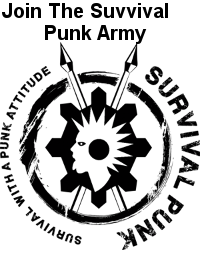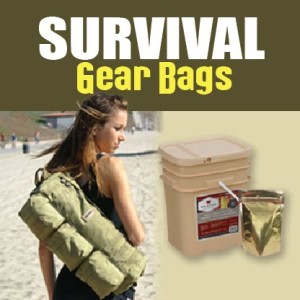Geocaching – A Cacher’s Overview
Today I have a guest post from a friend and former co-worker that escaped the madness. John left with his family and went further south and started blog. I asked him to do this guest post over a year ago and It is finally here. Enjoy this great write up on the hobby of geocaching. You can find more at his blog here -James
In July of 2012, I stumbled across a link to geocaching while looking for a cheap and fun way to celebrate my thirteenth wedding anniversary with my very lovely wife. Cheap was important to us, because we have five children and our finances prohibit many luxuries. On this website, the number one “cheap and fun” thing to do with your date was Geo-Caching. I thought to myself, “What in the world is that?” After some brief research on the subject, I became intrigued. Then after further research, I became very curious. So curious, I went out and found one to see what it was all about.
I spent about 15-20 minutes looking for that hidden thing and thought, “How in the world can this be fun? I can’t find it at all.” Well, I looked at all of the description on the cache, checked out some of the logs from previous cachers that found it, and used this information to discover it. I was forced to be sneaky because it was hidden behind an old sign outside of the Cracker Barrel next to where I worked. I didn’t want folks walking by that don’t know what Geocaching is (the folks are termed “muggles” in Geocaching circles) to think, “What’s that guy doing?” So, I quickly snuck my hand behind the sign and found a magnetic key holder and pulled it out. Inside was a simple log sheet that had dates and names on it. I happily signed my name and the date in the confines of my vehicle, and then quickly replaced it, . Following the directions, I then electronically logged the find in the geocaching system and got my first “smiley”: the term used for finding the cache. After that initial success, I was hooked.
I explained the details of the “game” to my wife, and she was already upset because I could not wait until we could do it together. Well, I was remorseful, to be certain, but that did not quell my growing thirst for more “smileys”. In earnest, I began using my lunches and additional free time to find “smileys”. I did introduce my children to the game and they love it because of the “booty” involved. All my kids look for places that might have some “booty”, even without my phone to guide them.
I promised a good friend and fellow outdoor enthusiast, James, to make a guest blog about geocaching on his blog site survivalpunk.com over a year ago and had yet to follow through. Recently, I found my 100th “smiley”, and renewed my promise to him to write this blog. Now that I have my own blog site, we can guest write blogs to each other! I am in no way an expert on Geocaching, but I have enough experience now to lay down some facts to those “muggles” out there: hence this blog.
Many of you that have already discovered Geocaching have similar tales of first successes and then a looming addiction of traipsing through wooded or swampy areas to procure the all elusive “smiley”. Others are currently scratching their heads and thinking “what is a cache and what is a smiley?” Well, Merriam-Webster defines a cache this way:

1cache
noun \ˈkash\
: a group of things that have been hidden in a secret place because they are illegal or have been stolen
: a part of a computer’s memory where information is kept so that the computer can find it very quickly
http://www.merriam-webster.com/dictionary/cache
Don’t worry; I have found nothing illegal nor stolen in a cache, YET. I believe this definition falls back on the old “Pirate’s Treasure” lore to define it. There is another word that stems from Pirate’s lore used in the Geocaching vernacular. “Booty” is often used to describe the “treasure” found inside a large cache. Acronyms also abound the geocaching world, and are far too vast to include all of them here, but I will make a small glossary of some common geocaching terms and acronyms at the end of this blog.
For some of us, Geocaching is just another reason to get outside. For others, it is a way to rekindle the fires of treasure hunting at its best. And then for yet others, it is a discovery that nature is beautiful and welcoming to all comers. BUT, it is not for everyone. If you prefer being inside on very hot or very cold days, it might not be to your liking. If you prefer walking on the path and never venturing into the woods, this is not your hobby. If solving riddles or puzzles is not a good way to pass the day, then Geocaching isn’t either.
“Electronic directions” began with the advent of personal handheld GPS systems in the 1990s. It became important for long distance hikers to know where certain “caches” or campsites were on their hikes. By setting specific Latitudinal & Longitudinal coordinates, hikers easily found these “caches”. When you are in a dense forest seeking shelter in a heavy downpour, this information can become very useful. Some of the hikers went as far as to “electronically” mark several “waypoints” to guide hikers along the correct path, making finding your way through the forest essentially as easy as following a well beaten path, even if it has been overgrown for years.
Using this new technology, a group of users created a website, www.geocaching.com, with hidden “caches” and included electronic coordinates to find them. Initially, only coordinates where provided to input into a GPS. This made the game exclusive only to those with the means to purchase the expensive handheld devices. This made the process something one had to plan, download, and then execute. Not much fun initially, but worth it to get out there and enjoy.
Enter the modern day Geocacher! With the advent of smart telephones, many avid geocachers urged “APP” creators to create an “APP” to geocache with. Geocaching.com created an “APP”, as well as many others. There are many to choose from, and they range from easy to use, to complicated. Some are available only on certain operating systems. Some are free, others have an annual fee. I initially started with c:geo, for my android phone. I switched to an iPhone and was forced to purchase the geocaching application itself, which I found complicated and not very user friendly. I tried open caching, but that was also very difficult to navigate. I finally went back to an android phone and was overjoyed with getting my free c:geo app loaded back up. The “APP” options are vast, and the decision is completely personal. So, my suggestion to first time geocachers is to check out the reviews and make your own decision. Despite all the options on applications for your phones, all first time geocachers must register at the www.geocaching.com website to find caches.
Even more exciting are the geocaching events. On occasion, some geocachers create events where cachers can meet other cachers. These are fun and inexpensive events, unless of course you want to purchase some of the items many want to sell you. I prefer to find caching items from the camping section at a local store. They are right there, at your local store, HIPS!
There are several types of “caches” and I have yet to find each type of cache, but I will describe a few of them so that the novice can decide for themselves which type of cache to seek.
Cache types:
- Traditional – (represented with a box) sizes range from micro to very large, but typically are large enough for a log book and a few prizes
- Micro – (represented with two ?’s) very small, and is generally used to describe the bison tube, often used to keep logs only for a cache
- Virtual – (usually represented with a ghost) typically a cache of viewpoint– like a coast, mountainside, or high-rise building – no cache actually exists, but generally the cache owner expects pictures of this location as proof
- Puzzle – (represented with a book with a ? on it) these are more difficult to find, as they follow the idea that “treasures are to be hidden” and require some thorough thought and in some cases, research
- Multi-cache – (represented with a few boxes) a series of caches with only the initial coordinates for the first cache with coordinates leading to the next cache, etc. to a final cache of treasure – there are variations of the multi-cache, and relies solely on the cache owner
- UV or Night – (represented with a UV)a cache specifically made to find at night – generally covered with UV reflective tape to easily be found with a UV flashlight (these are fun)
- Mystery – (also represented with a book and a ? on it) much like the puzzle cache, it requires some logic and reasoning, typically ending with discovery of some educational or trivial information one may have never known about the area before the cache was placed
Why are they called “smileys”? I will get to that, but I have included a glossary that should be very beneficial to those “muggles” out there interested in launching their geocaching adventures.
Glossary:
- Log – typically a rolled up sheet of paper for cachers to sign as evidence they found the cache
- Booty – usually little trinkets or toys to take from, or in, the cache
- Traceables – these are actually registered items with the geocaching site that can be tracked online to their whereabouts. They do require folks to input their location, but these are fun for those that love it
- CITO – stands for Cache in, Trash Out: a standard when you find a trash bag in a cache – it is our civic responsibility to keep the area clean of trash, so do your part
- TFTC – a standard reply to the cache owner when a cacher finds their cache – it means Thanks for the cache
- HIPS – usually a code to help those that cannot find a cache when it is obvious to many – it means hiding in plain sight
- Bison tube – a small cylindrical tube with a threaded top to place a log into – used for many micro caches
- Smiley – when a cacher finds a cache, the location on the application map changes from a box to a smiley face, hence the name
- Degree of difficulty – the rate in which a cache is to find, the higher the number, the harder to find
- Muggle – Based on “Muggle” from the Harry Potter series, which is a non-magical person, this term is used to define all non-geocaching folk in general (but unlike in HP – muggles can become cachers)
- DNF – did not find
- BYOP – means that the cache is too small to have a pen available and you should bring your own pen
Happy Caching Y’all!

























Comments are closed.